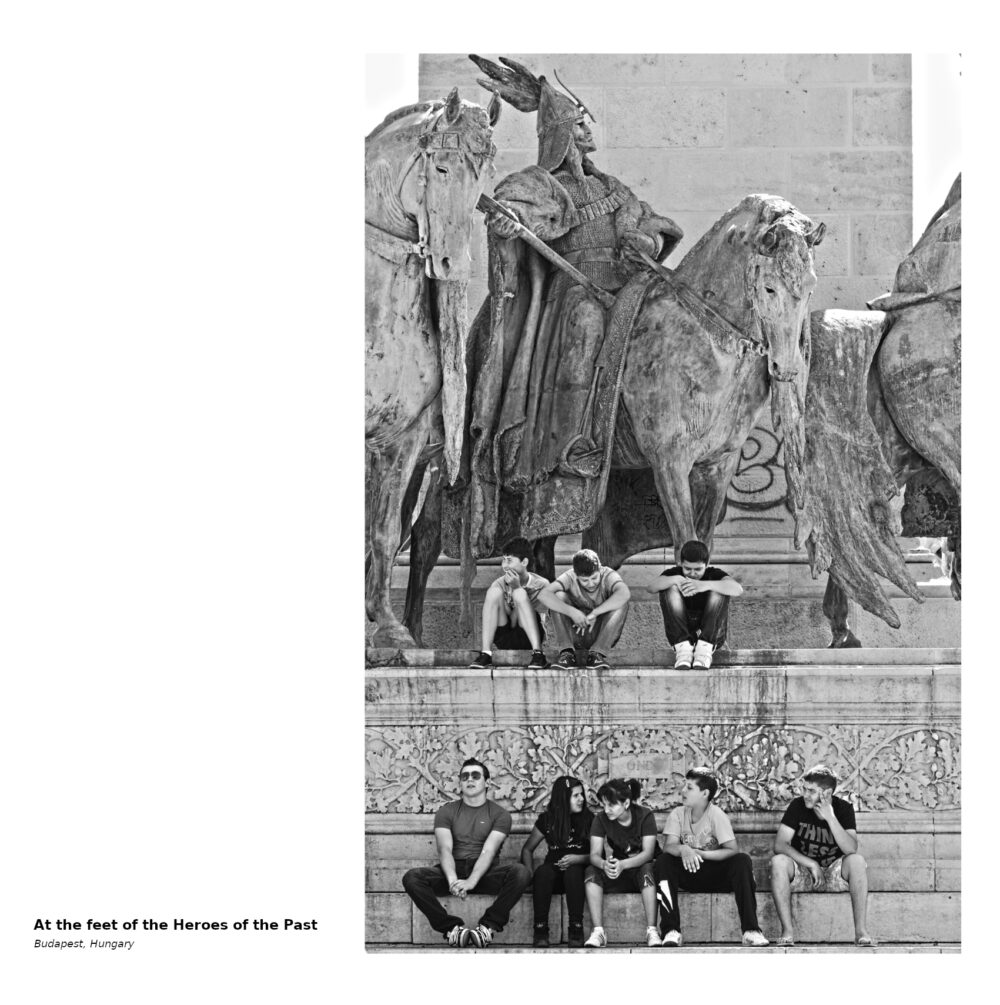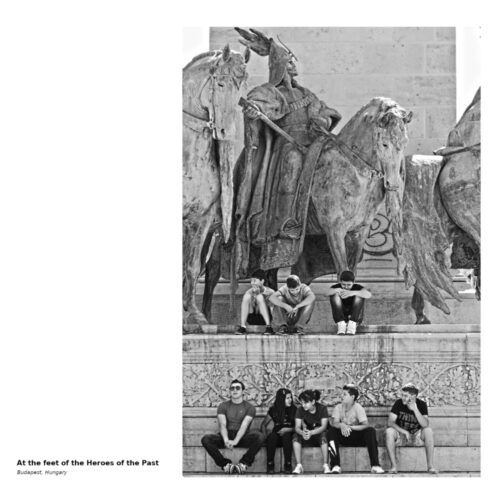At the feet of the heroes of the past
In Budapest, Hungary, the “Heroes square” is an iconic place. In its centre are the statues of the seven Magyar leaders who, at the end of the 9th century, brought their People to the land which is now Hungary.
Past and present meet in this square, as those young teenagers are sitting at the feet of one of the Historic tribal chieftains. I must confess that the more I look at this photograph, the more I get a paradoxical feeling, as if something were not in its place, thus producing a big dissonance.
But it is a subtle dissonance, something not obvious, difficult to perceive with clarity.
It has to do with the relationship between the Past and the Present. On one hand, we have those magnificent Heroes looking with pride toward the future, emanating leadership, vision, a strong presence, stability, and something you can rely on. On the other hand, we have those young guys who seem to have no “weight” and nothing better to do than doing nothing.
But they are doing it in the shadow and protection of those Heroes of the past, and this, in a way, gives hope.
Anyway, if a storm were to come, it would easily carry away those guys, but the Heroes from the Past would stay in place.
We have a tendency to not learn from the past. We think that just because we are young, or new, then it will be better. Furthermore, we have a short-term memory, and an even shorter understanding of History. I believe this to be the consequence of the culture of superficiality we are developing with growing volume.
Today, one would buy a new smartphone not because the one he owns does not work any more, but because having a two year old product becomes – especially for youngsters – something inconceivable. And the truth is that the industry helps this matter, as those manufactured products tend to break, or in the best of cases, degrade in performance after a while.
The new motto is: nothing should last long, all things should be replaced. But this goes far deeper than a consumer experience; it becomes a state of mind, a way of living: streaming videos are replacing books. Selfies replace photographs. Tweets replace “real news”. And nothing lasts long. In social networks, the visibility of a post is often for a few minutes – if not less – before being pushed towards the bottom and replaced by the “next new post” which, in its turn, will last a few minutes.
But something stays. If not in our easily vanished memory, History is written in the memory of those bronze statues from the Heroes Square. And those are more than silent statues. They are shouting, but the sound is not perceptible to our ears, it goes into our hearts – of those of us who are willing to open their heart.
In Tibetan Heritage there is the concept of the “Voice of Silence” which is the call one can hear when he becomes conscious of his emptiness. It is the same here. The call of those Heroes, the call of History, the call of our legacy will be heard by those ready to hear it, and to answer it.
I believe it goes into the hearts of those, like in the image, who are sitting at the feet of heroes… even if they don’t know it yet.


